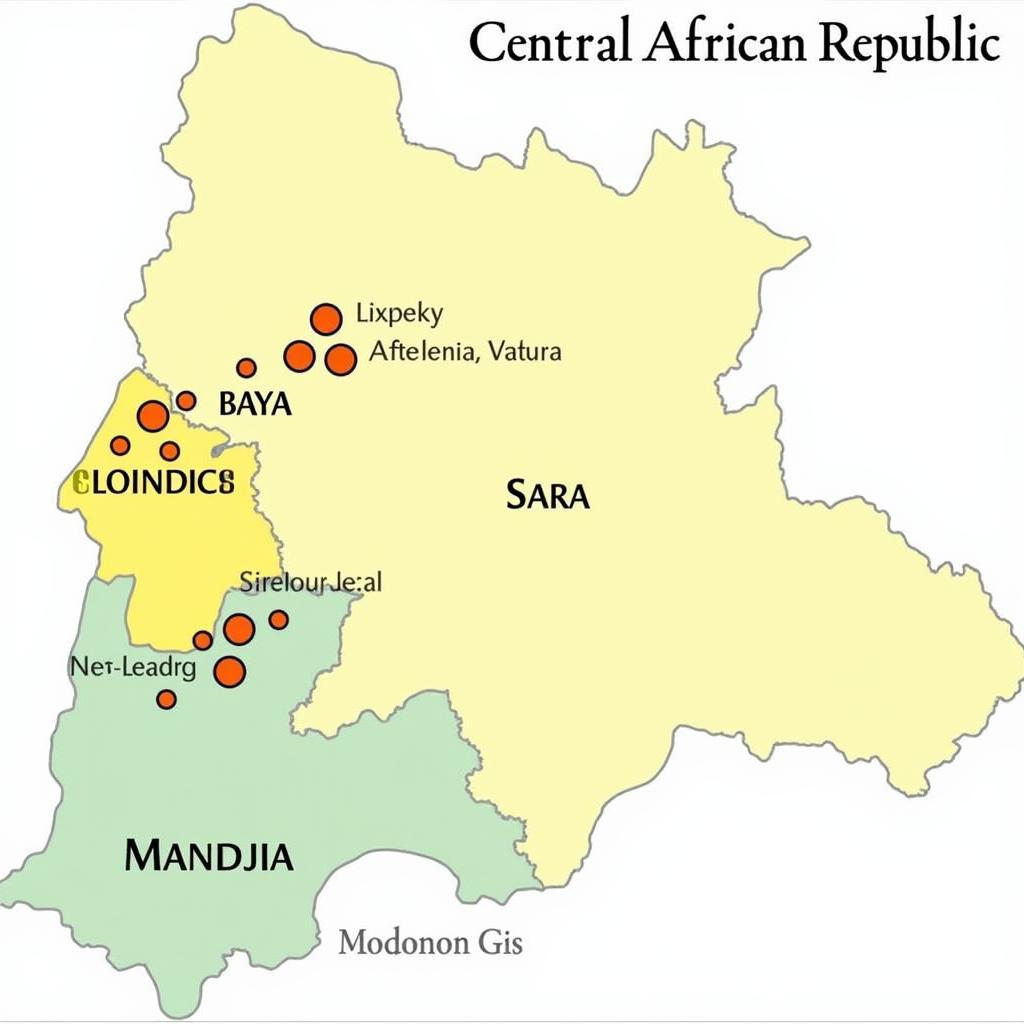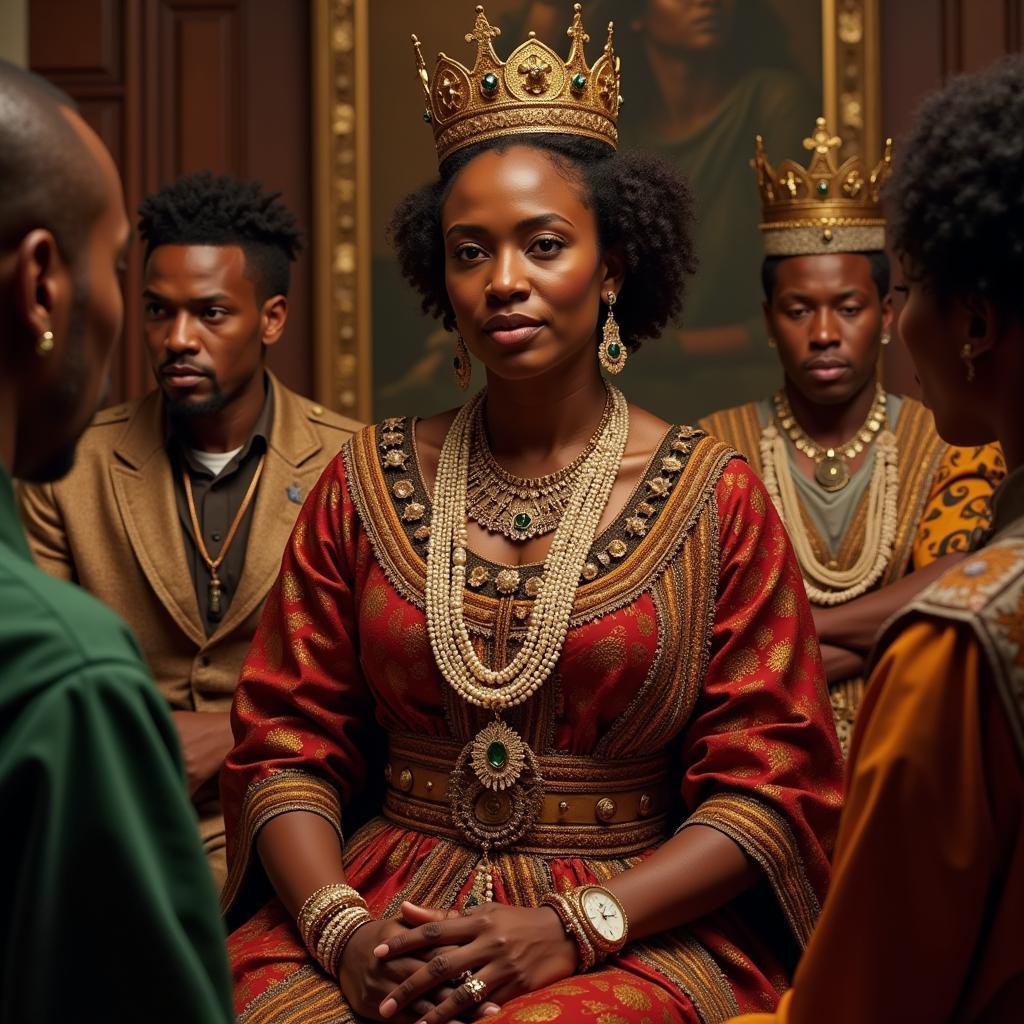Navigating the Demographics: Understanding the Central African Republic Population
The Central African Republic, a landlocked nation in the heart of Africa, boasts a rich tapestry of culture and natural beauty. However, understanding the Central African Republic Population involves delving into its complex demographics, characterized by a unique blend of ethnicities, languages, and a history marked by both challenges and resilience.
A Diverse Cultural Landscape: Exploring the Ethnicities Within the Central African Republic Population
The Central African Republic population comprises over 80 ethnic groups, each contributing to the nation’s vibrant cultural mosaic. The largest groups include:
- Baya (33%): Known for their agricultural prowess and intricate craftsmanship, the Baya predominantly reside in the western regions. Their traditional music and dance forms are integral to the country’s cultural heritage.
- Banda (27%): Scattered across the central and eastern parts of the nation, the Banda are recognized for their hunting skills and vibrant artistic traditions.
- Mandjia (13%): Concentrated in the south, the Mandjia play a significant role in the country’s economic activities, particularly in agriculture and trade.
- Sara (10%): Primarily inhabiting the northern regions, the Sara are renowned for their pastoralist lifestyle and intricate social structures.
 Ethnic Groups of the Central African Republic
Ethnic Groups of the Central African Republic
This rich ethnic diversity, while a source of cultural richness, also presents challenges in terms of national unity and social cohesion.
The Linguistic Tapestry: Languages Spoken Within the Central African Republic Population
French and Sango hold the status of official languages in the Central African Republic, reflecting the country’s colonial history and the need for a unifying national language.
- French: As the language of administration, education, and commerce, French plays a crucial role in the country’s formal sectors.
- Sango: An indigenous language originating from the Ngbandi language, Sango serves as the primary language of communication for over 90% of the population. Its widespread use highlights its unifying power in a nation characterized by linguistic diversity.
In addition to these official languages, numerous indigenous languages continue to thrive within the Central African Republic population. These include languages spoken by the Baya, Banda, Mandjia, and Sara ethnic groups, showcasing the resilience of local cultures and traditions.
Religion and Beliefs: Shaping the Identity of the Central African Republic Population
Religious beliefs play a significant role in shaping the values and social fabric of the Central African Republic population.
- Christianity: With a significant portion of the population adhering to Christianity (Catholicism and Protestantism being the most prominent denominations), the influence of Christian values is evident in various aspects of society.
- Islam: Represented by a substantial portion of the population, Islam contributes to the religious diversity of the nation, with mosques often standing alongside churches.
- Indigenous Beliefs: Despite the prevalence of major religions, traditional African beliefs persist, particularly in rural communities. These beliefs often intertwine with practices related to ancestor veneration, spirit worship, and traditional healing methods.
This religious pluralism, while contributing to the richness of cultural expression, has also been a source of tension and conflict in the country’s recent past.
A Young and Growing Population: Looking at the Age Structure of the Central African Republic Population
The Central African Republic has a relatively young population, with a significant proportion under the age of 15. This youthful demographic presents both opportunities and challenges:
- Opportunities: A young population holds the potential for a large and vibrant workforce, capable of driving economic growth and development.
- Challenges: Providing adequate healthcare, education, and employment opportunities for this young and rapidly growing population remains a significant challenge.
Addressing these challenges is crucial for harnessing the potential of this young generation and ensuring a brighter future for the nation.
Conclusion:
Understanding the Central African Republic population involves recognizing the interplay of its diverse ethnicities, languages, religions, and age structure. This diverse demographic landscape presents both opportunities and challenges for the nation’s future. By acknowledging and addressing these factors, the Central African Republic can work towards fostering greater unity, stability, and sustainable development for its people.
FAQs About the Central African Republic Population:
- What is the current estimated population of the Central African Republic?
The estimated population is around 5.5 million. - What is the life expectancy in the Central African Republic?
The average life expectancy is approximately 54 years. - What is the literacy rate in the Central African Republic?
The literacy rate is estimated to be around 64%.
For more information about African countries and their capitals, please refer to the following resources:
If you need assistance, please contact us:
Phone Number: +255768904061
Email: kaka.mag@gmail.com
Address: Mbarali DC Mawindi, Kangaga, Tanzania.
We have a 24/7 customer service team.
